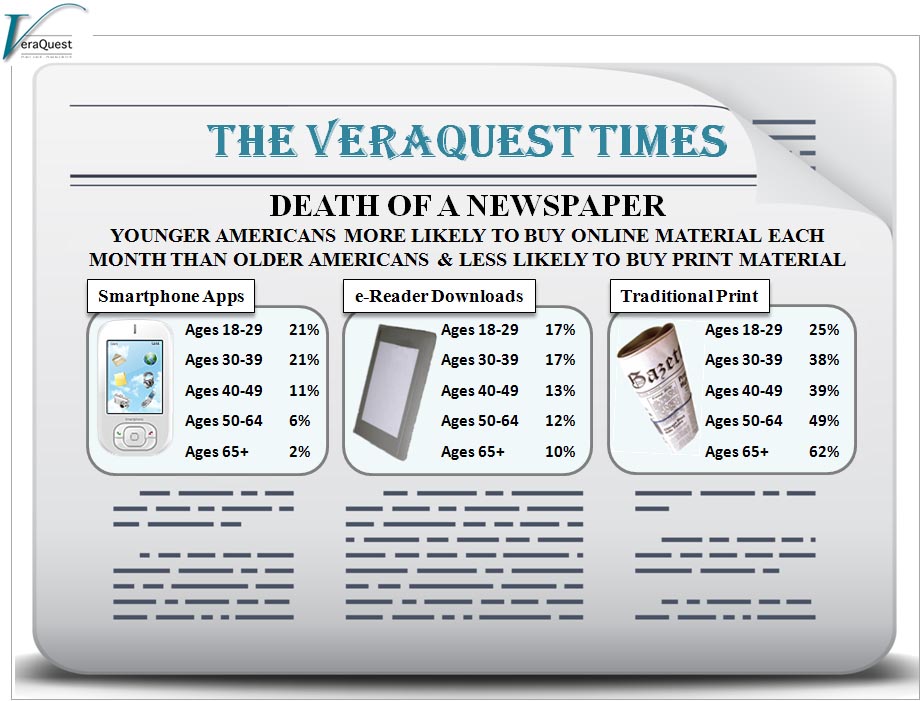Our traditional forms of acquiring information and news (and just plain reading) may be dying a slow (and perhaps painful) death.
There are actually two ways to look at the data:
- We can look at expenditures from everyone in the survey whether or not they buy smart phone apps or newspapers/magazines, however, this approach favors traditional print because there are still way more people who buy traditional print than who buy smart phone apps and all those zeros (people who don’t buy stuff) are included in both averages.
- We can also look at expenditures just among people who actually spend something. This is the comparison we’ve chosen to make below. It creates more a of level “playing field”
- $29.29 – on applications for smartphones
- $20.77 – on traditional print – not online – material like hard copies of newspapers and magazines
- $57.74 – on downloaded material for e-readers like Kindles and Nooks
There is still some good news for traditional print media, when looking at the low end of the spectrum. A greater share of Americans devote at least some of their monthly budget (i.e., more than $0) to traditional print material, while most Americans spend nothing on online applications. On a monthly basis,
- 42% of Americans spend on traditional print, while
- Only 14% spend on downloaded material for e-readers, and
- Only 12% spend apps for smartphones.
In other words, the headline reads: few Americans spend a lot on online materials while more Americans spend less on traditional print, making the averages look similar.
But, now here is the (perhaps more telling) bad news for traditional print material…. while right now, traditional print receives somewhat comparable average dollars each month, it likely will lose share as we move into the future. And here’s why:
Younger Americans (those 18-29) are much more likely to buy online material each month than older Americans and much less likely to buy print material.

So monthly expenditures for print and online material follow an opposing path based on age, which I think spells doom for the traditional print business, assuming teens and pre-teens as they age will continue to look more more like their 18-29 year old counterparts than baby boomers and seniors in how they consume information.
That’s my perspective. What’s your read?
Leave a Reply